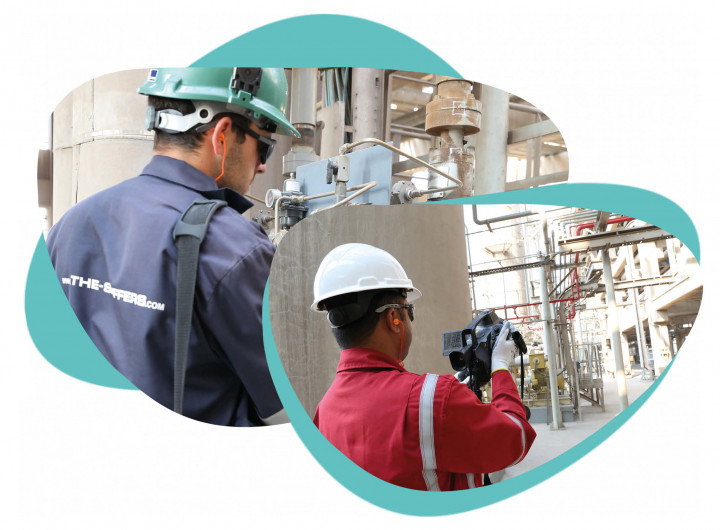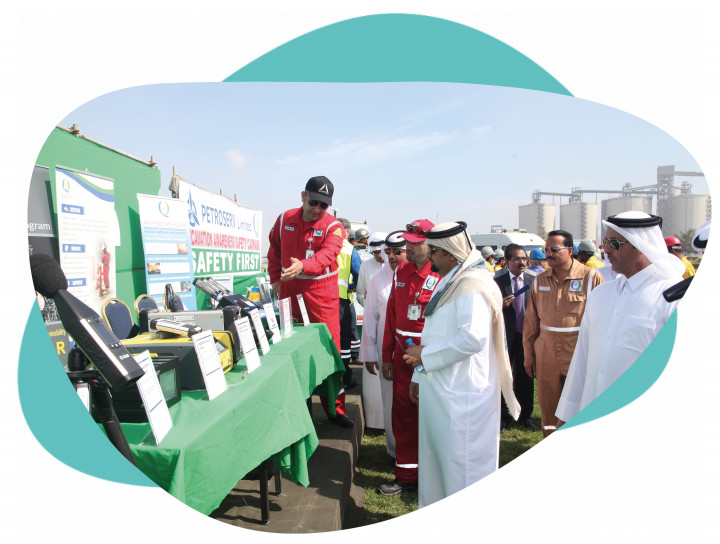Environmental Monitoring
QAFAC continues to demonstrate its commitment and dedication to a healthier natural environment, through our environmental conservation processes and activities. We recognize the potential negative environmental impacts associated with our production processes, and therefore strive to implement proper environmental management to mitigate and minimize these impacts.
FUGITIVE EMISSIONS - LDAR (LEAK DETECTION AND REPAIR)
QAFAC’s LDAR (Leak Detection and Repair) program has been implemented at both the Methanol and MTBE plants. This project has been performed by a world renowned contractor. The Leak Detection and Repair (LDAR) campaign, focused on monitoring fugitive emissions of Volatile Organic Compounds (VOC) and hazardous air pollutants. This program follows the US Environmental Protection Agency’s standards for the synthetic organic chemical industry (SOCMI). In essence, the program checks all components of the facility that are subject to leakages, identifies any leaks and calculates the possible amount of gas or material leaked. Any leaks are then repaired, and further analysis done to ensure that no other leaks remain. Finally, frequency detection tests are planned and conducted on suspected components. Some of the measures currently in place to reduce fugitive emissions are listed below.

FUGITIVE EMISSION REDUCTION METHODS
All pressure relief valves and vent lines from sampling devices and pump handling process fluid are vented to the flare system.
Tandem mechanical seals are used in centrifugal pumps and compressors to eliminate gland leaks.
Methanol and MTBE storage tanks are fitted with internal floating roofs to minimize vapor discharges.
Construction material is chosen to minimize the effects of corrosion and eliminate leakages caused by corrosion-related failures.
INDOOR AIR QUALITY
Indoor Air Quality (IAQ) refers to the air quality within buildings and structures, especially as it relates to the health, productivity and comfort of building residents. The US EPA has listed IAQ as one of the top 5 public health risks. Due to extreme environmental conditions in Qatar, people spend majority of their time indoors. Whether children in schools, adults in offices, malls or at home, there is a higher probability of being exposed to indoor air pollutants over outdoor air pollutants. These cumulative effects highlight the importance of monitoring, analyzing and reporting IAQ accurately. QAFAC has established a comprehensive plan under which we used to conduct indoor air quality monitoring, the purpose of which was three-fold:
- To maintain indoor quality within acceptable limits according to consensus guidelines developed by NAAQS/EPA and OSHA;
- To identify any potential health hazards and
- To provide information to personnel with IAQ concerns on what to expect.
We used to install state-of-the-art portable indoor air quality monitoring analyzers in all QAFAC building complexes and do continuous monitoring for 8 hours where 22 air quality parameters were measured. To date, all parameters are normal in relation to industrial guidelines for indoor air quality.
